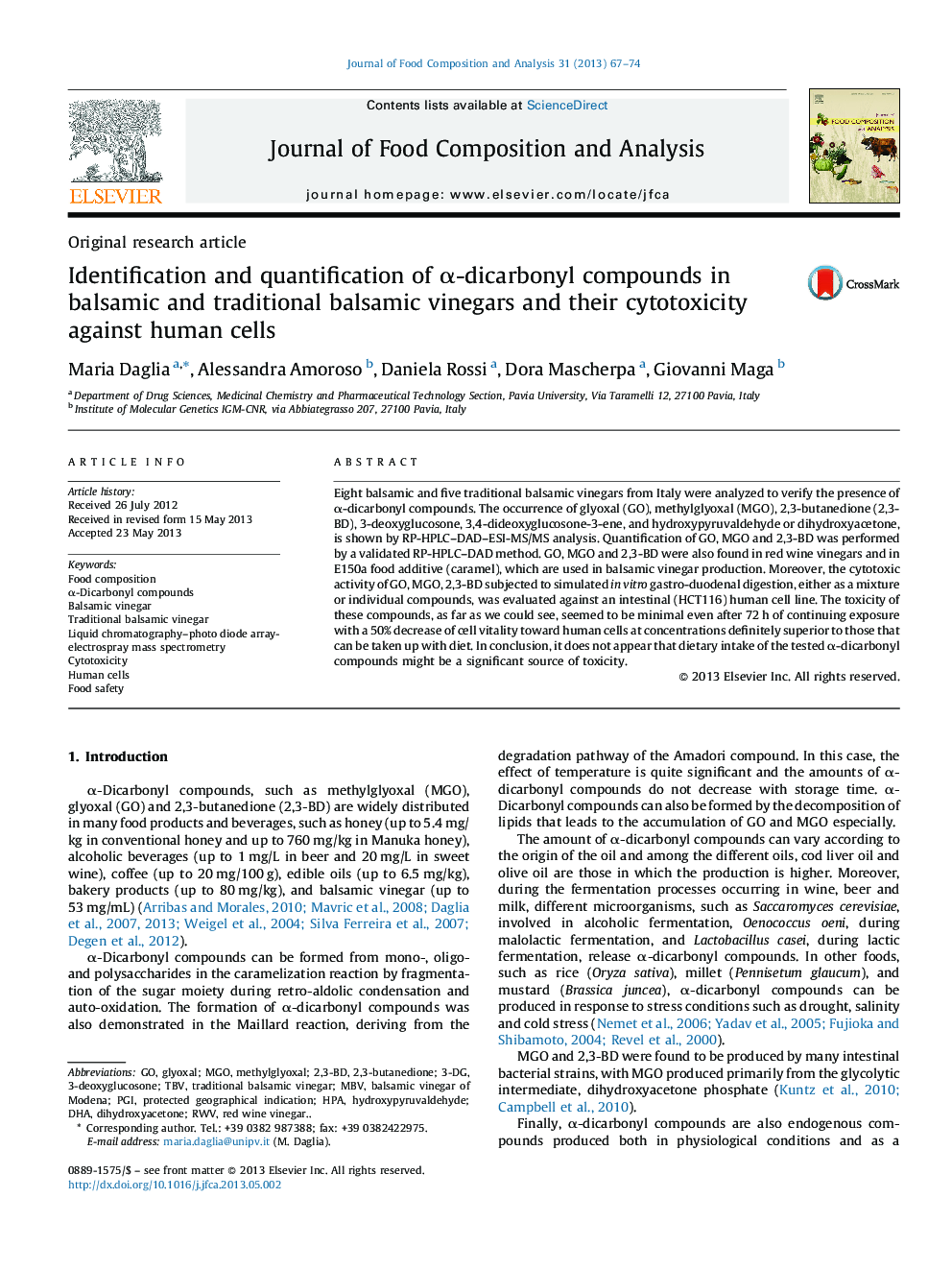| Article ID | Journal | Published Year | Pages | File Type |
|---|---|---|---|---|
| 10552759 | Journal of Food Composition and Analysis | 2013 | 8 Pages |
Abstract
Eight balsamic and five traditional balsamic vinegars from Italy were analyzed to verify the presence of α-dicarbonyl compounds. The occurrence of glyoxal (GO), methylglyoxal (MGO), 2,3-butanedione (2,3-BD), 3-deoxyglucosone, 3,4-dideoxyglucosone-3-ene, and hydroxypyruvaldehyde or dihydroxyacetone, is shown by RP-HPLC-DAD-ESI-MS/MS analysis. Quantification of GO, MGO and 2,3-BD was performed by a validated RP-HPLC-DAD method. GO, MGO and 2,3-BD were also found in red wine vinegars and in E150a food additive (caramel), which are used in balsamic vinegar production. Moreover, the cytotoxic activity of GO, MGO, 2,3-BD subjected to simulated in vitro gastro-duodenal digestion, either as a mixture or individual compounds, was evaluated against an intestinal (HCT116) human cell line. The toxicity of these compounds, as far as we could see, seemed to be minimal even after 72 h of continuing exposure with a 50% decrease of cell vitality toward human cells at concentrations definitely superior to those that can be taken up with diet. In conclusion, it does not appear that dietary intake of the tested α-dicarbonyl compounds might be a significant source of toxicity.
Keywords
Related Topics
Physical Sciences and Engineering
Chemistry
Analytical Chemistry
Authors
Maria Daglia, Alessandra Amoroso, Daniela Rossi, Dora Mascherpa, Giovanni Maga,
